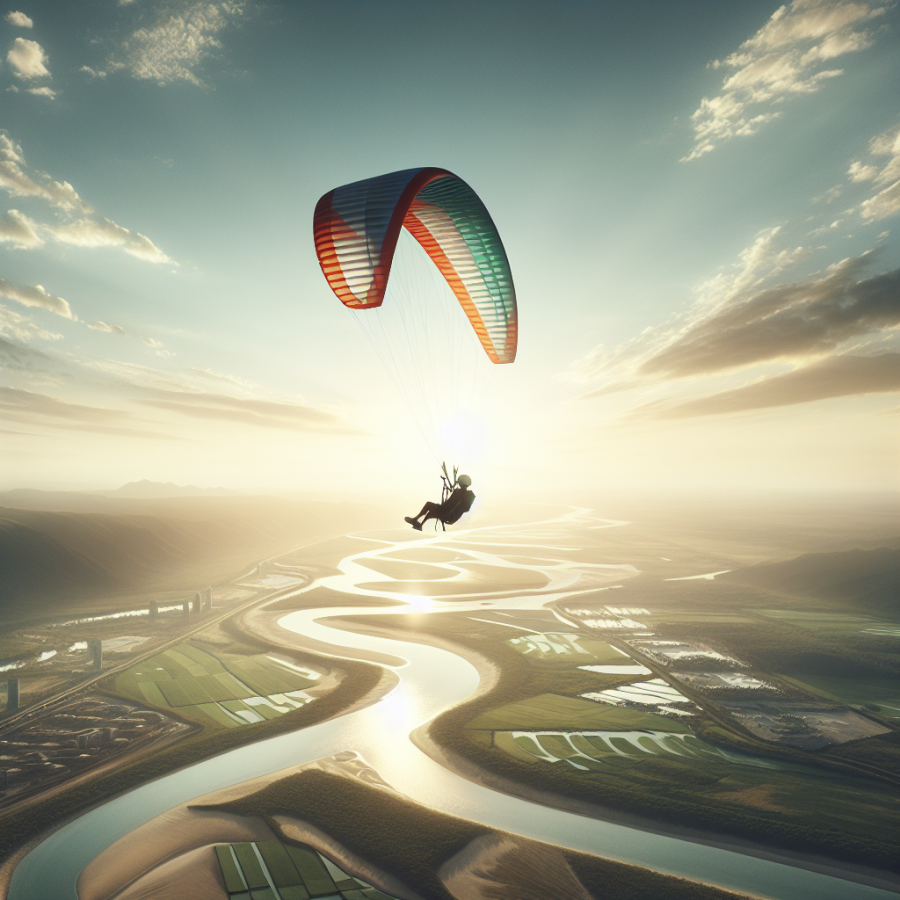Soaring Above the Clouds: Unveiling the World of Paramotoring
Paramotoring, also known as powered paragliding, combines the simple elegance of paragliding with the autonomy provided by a motor, propelling adventurers into a unique airborne experience. This growing sport has captivated thrill-seekers across the globe due to its relatively easy learning curve and minimal gear requirements when compared to other forms of aviation.
One of the most exceptional elements of paramotoring is the freedom it offers. With the ability to take off and land in small areas, pilots are not tied to airports or extensive runways. This offers unparalleled access to skylines near and far – from serene coastlines to majestic mountain ranges. The pilot straps into a harness attached to a wing resembling a parachute, which catches the wind for liftoff. The attached motor provides the necessary thrust to explore the skies at will, steering with the wing's brake toggles to navigate the desired course.
Safety in paramotoring is paramount, and with proper training, the associated risks can be significantly minimized. Beginners usually start with ground handling and low-level flights, advancing to higher altitudes and more complex maneuvers as they gain proficiency and confidence. Moreover, technological advancements have greatly improved the reliability of the equipment used, with a particular emphasis on the efficiency and durability of the motors and the aerodynamics of the wings.
The versatility of paramotoring allows enthusiasts to embark on a variety of adventures. Photography aficionados leverage the aerial vantage point to capture stunning panoramas, while others use paramotors to undertake cross-country expeditions, flying above diverse landscapes and experiencing the world from a fresh perspective. Some pilots revel in the competitive side of the sport, participating in races and acrobatic displays that showcase the pilot's skillfulness and the agility of their wing.
The paramotoring community is an inclusive and diverse group, with pilots sharing an intrinsic love for the skies and a passion for flight. Online forums, social media groups, and clubs bring together beginners and experts to share tips, discuss gear, and coordinate flying sessions. This sense of camaraderie is a unique facet of the sport, fostering a supportive environment where knowledge and experiences are exchanged freely.
For those who dream of flight and crave an experience that melds independence with the allure of the open air, paramotoring is a doorway to fulfill those yearnings. As pilots soar above the clouds, they join the ranks of those who have taken the reins of personal flight, finding freedom and exhilaration amidst the boundless skies.
Read also:
Mastering the Game of Reversi: Strategies and Tips
Gearing Up for Flight: Essential Tips for a Safe Paramotoring Experience
Gearing Up for Flight: Essential Tips for a Safe Paramotoring Experience
Before taking to the skies in a paramotor, safety should always be your top priority. This sport may bring the unparalleled joy of flight, but it mandates respect, preparation, and knowledge. Let's explore the essential tips you need to consider to ensure a safe and enjoyable paramotoring experience.
**Understand the Equipment**: The first step is to get thoroughly acquainted with your gear. Paramotoring requires several key components such as the wing (paraglider), the harness, and the motor. It's crucial to recognize the function of each piece, how they work together, and the proper way to use and maintain them. Choose equipment that suits your skill level, and never compromise on the quality of your gear.
**Seek Professional Training**: Training with a certified instructor is invaluable. Not only will professional training teach you how to handle the equipment, but it will also cover essential safety procedures, flight techniques, maneuvers, and emergency protocols. A structured training program can help you build confidence and competence before your first solo flight.
**Weather Wisdom**: Weather can make or break a paramotoring flight. It's important to understand how different weather conditions affect flight dynamics. Know how to read weather forecasts, recognize unsafe weather patterns, and learn when it’s best to stay grounded. Keep in mind that weather can change quickly, so always be prepared for unexpected shifts in conditions.
**Pre-Flight Checklist**: Before every flight, perform a thorough pre-flight safety check. Inspect your equipment for any signs of wear or damage, double-check fuel levels, ensure lines are not tangled, and confirm that your harness and helmet are properly secured. This routine inspection can prevent accidents and ensure your equipment functions as intended during flight.
**Know the Laws and Regulations**: Awareness of the laws that govern airspace and paramotoring activities is not only a legal obligation but a safety requirement. Familiarize yourself with local regulations, no-fly zones, altitude limits, and any required permissions. Not adhering to these can lead to dangerous encounters with manned aircraft and legal consequences.
**Communication is Key**: Invest in a reliable communication system. Whether it's a radio to communicate with other pilots and your ground crew or a means to contact local air traffic control if necessary, the ability to communicate effectively can significantly increase your safety in the air.
**Flight Planning**: Planning your flight is a critical step.




